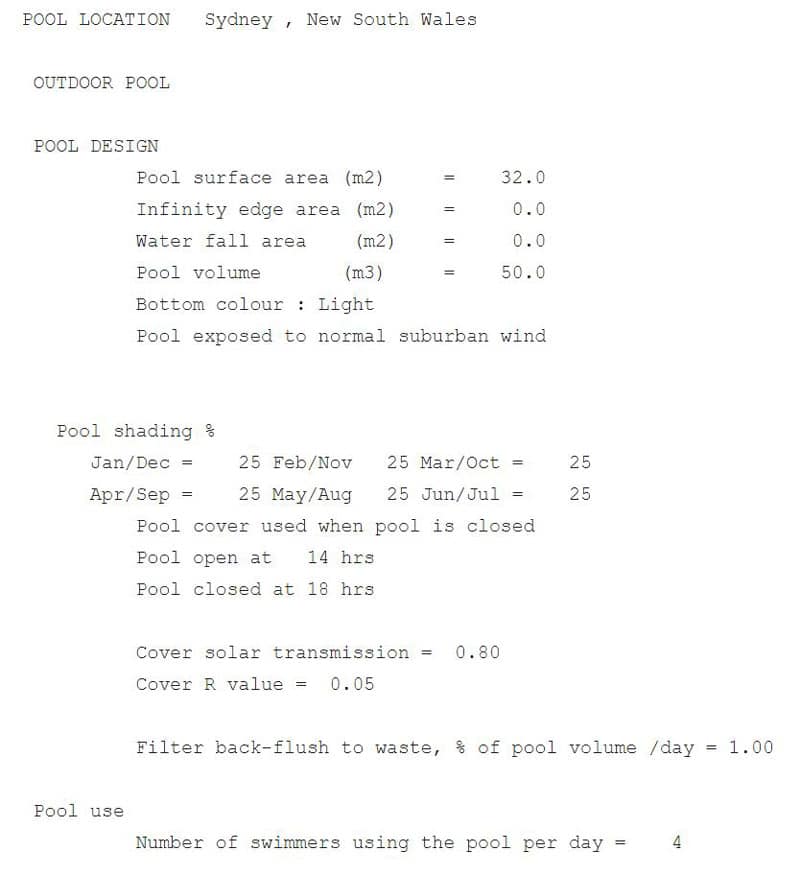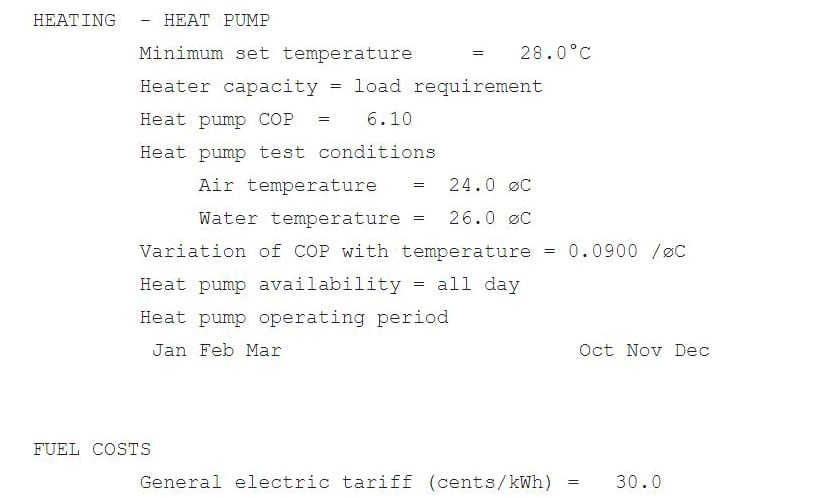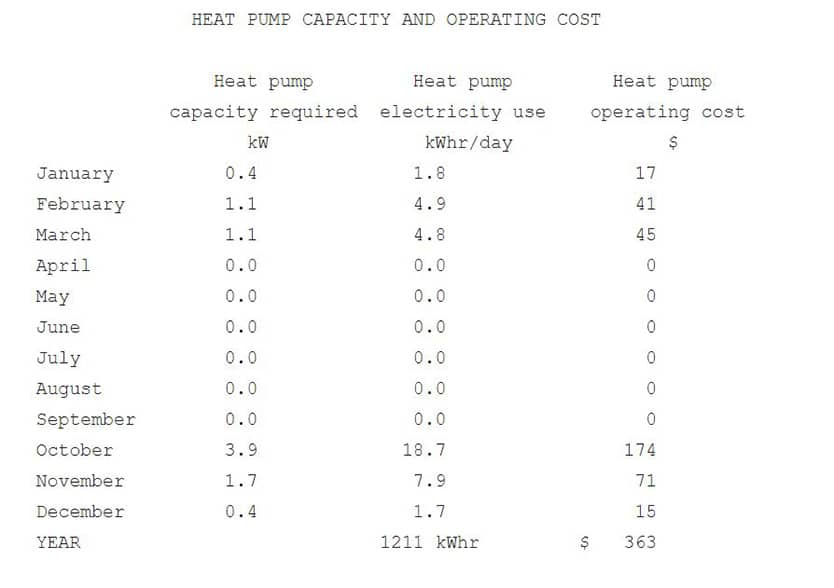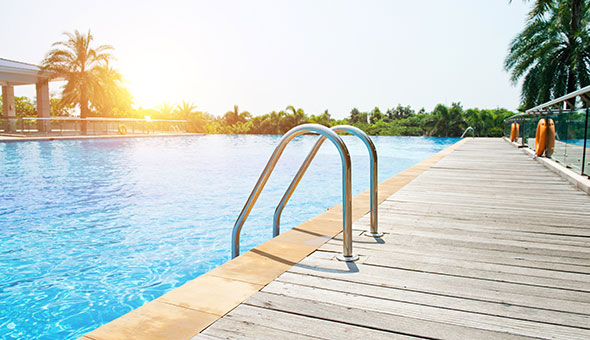At EvoHeat, we pride ourselves on service and our expert industry knowledge. We make sure we provide our customers with accurate and factual information on our products and other pool heating solutions. Unfortunately, sometimes other companies provide misleading information and we want to make sure you have the right facts and information before investing in your pool heating equipment.
Below is a letter to the Pool + Spa editor from our General Manager, Travis McNeill. This letter was in response to an article that we believe provided misleading and incorrect information (click here to view original article). So before you go ahead and invest in your pool heating equipment make sure you have the right facts!
LETTER TO THE EDITOR I am writing this letter in response to the article ‘The future of energy and pools: is the status quo about to shift?’
I believe this article contains a large amount of misleading information and I will outline my arguments and back these up with facts and data.
Let me firstly say I am an industry professional and the company I work for sells heat pump systems for pools, so obviously I take umbrage to the message portrayed in this article. It also means that my bias may be taken as towards heat pumps, but as I will outline below the data will speak for itself.
I have no argument with the figures relating to average household energy usage (apart from the fact the energy should be measured in kWh not kW), however I do have an issue with the heated pool figures. The article states that a pool requires 8000 kW(h) of energy to maintain, but this figure is misleading as this energy is related to a full 12-month swimming season. The article goes on to espouse the virtues of solar pool heating, without mentioning that solar pool heating cannot and will not provide a suitable swim temperature 12 months of the year. To compare a 12-month heating season from a heat pump with a six-month solar pool heating season is clearly not providing an apples-for-apples comparison, and in my opinion is misleading the public significantly.
As shown at the bottom of the article the data quoted is based on an average 32 m2 Sydney pool heated to 28°C for six months of the year. This information can be entered into heat load modelling software to determine pool heating costs and energy consumption. Our company uses Poolheat heat load modelling software; this software was developed by Mechlab at the University of NSW and is considered to be the premier heat load modelling software on the market.
So let’s look at the data input for that average Sydney pool heated for six months of the year. I have assumed 25% shading on the pool each day and normal backyard location for wind exposure. I have used a bubble cover (see comments below) and assumed the cover is removed for four hours per day. In reality the cover would likely be on 24 hours per day for five days a week and possibly off for longer periods during the weekend. I have assumed electricity at 30 c/kWh for this model.
INPUTS Pool location: Sydney, New South Wales Pool surface area (m2) = 32.0 Pool volume (m3) = 50.0 Bottom colour: Light Cover solar transmission = 0.80 Cover R value = 0.05 Filter back-flush to waste, % of pool volume/day = 1.00 Number of swimmers using the pool per day = 4 HEATING – HEAT PUMP Minimum set temperature = 28.0°C Heater capacity = load requirement Heat pump COP = 6.10 Heat pump test conditions Air temperature = 24.0°C Water temperature = 26.0°C Variation of COP with temperature = 0.0900/°C Heat pump availability = all day Heat pump operating period: Jan, Feb, Mar, Oct, Nov, Dec General electric tariff (cents/kWh) = 30.0


The data above shows the inputs into Poolheat for our example. Of course different pools will have different outputs, but you can see the data is pretty consistent with that claimed in the article.
OUTPUTS Now let’s take a look at that pool’s outputs. Remember the claim that the cost could be over $2000? As you can see below it is a fraction of this figure, and the power consumption of the heat pump totals only 1211 kWh per year for the six-month heating season.

12-month heating season — solar thermal won’t come close Why are we comparing just a six-month season? Solar thermal won’t provide a comfortable swimming temperature for a period longer than six months, and even in this period can’t guarantee the pool will be at temperature. Got a pool party planned for the daughter’s birthday on a Sunday in January? Five days of rain and cloud beforehand and that pool is cold. Party cancelled; daughter crying; parents miserable. I have seen comparisons between the cost to heat a pool with a heat pump based on 12-month running time vs solar. How can you possibly compare the two given the solar only works at best 50% of the year? Solar thermal will not provide a suitable water temperature for more than six months (unless you are a penguin, or the system size is so large it covers the entire roof at great cost).
‘Free’ solar heating The sun’s energy is free — it’s true. But you still must pump that water up onto the roof of the house, and if you have a double-storey house that is not insignificant. Our heat pump systems simply connect inline with the filtration system, and installation of a variable speed pump (which we consider another must-have for efficiency) allows low water flow for a longer period therefore eliminating any extra pumping costs for the heating. I’m not a solar pool heating expert — perhaps we could have some input on the pumping costs for solar pool heating. Solar pool heating isn’t free — there is a cost. I would like to see data showing the pumping costs for that six-month season and compare to our heat pump data shown above.
I’m going to be super conservative and say a solar pool heating system would need to run an average of two hours per day with a pump consuming 400 W of energy. 180 days x 0.4 kW x 2 x 30 c/kWh = 144 kWh or $43.20 per year. Next to nothing, right? But compare it to the 1.5 kW PV/heat pump option below. Now pump that water onto your two-storey house and see the costs rise.
PV vs solar thermal Looking at the above example the peak heating load on the pool is October, with an average hourly load of 3.9 kW to maintain the desired 28°C swim temperature. This means that the required heat to maintain the pool in October is 3.9 kW x 24 h = 93.6 kWh of thermal energy per day.
A 5 kW heat pump would probably meet this October load if allowed to run for 24 hours a day (5 kW x 24 h = 120 kWh), but let’s go to a 9 kW model and reduce that runtime to 10.4 h (93.6 kWh/9 kW) per day to optimise the run time to coincide with the solar PV production time. This 9 kW heat pump will consume 1.5 kW of electricity to produce each 9 kW of thermal energy.
In the warmer months the result is the heat pump needs to run less often: 4.5 hours a day in November (1.7 kW * 24hrs/9 kW) and less than 3 hours a day for the bulk of the swimming season.
The average solar PV production rate in Sydney is approximately 3.9 kWh of electricity per kW of installed panels, but there is no reason to try and size the system to fully take the heat pump load. The rest of the house (and pool) uses electricity — that can always take any power not used by the heat pump, and overall will provide a much better solution than oversizing the PV system. So let’s go for a conservative scenario and install just 1.5 kW of solar on the roof for the pool, or 5.85 kWh of electricity per day. If we look at the chart below we can see that a very tiny 1.5 kW system will provide enough power to effectively offset the heat pump’s electricity usage for four of those six months. The PV will supply 1053 kWh of electricity for the six-month (180-day) period. This means a shortfall of 158 kWh for the swim season, or $47.40 per year. I wonder if the solar thermal pumping costs are more than 158 kWh per year as per my example above?

But of course the solar PV doesn’t become useless when April comes around. It keeps on producing the average 5.85 kWh for the rest of the year too — another 1082 kWh of electricity and a saving of $324.68 per year off the customer’s electricity bill.
So as you can see a 9 kW heat pump plus a measly 1.5 kW of PV solar gives the customer a guaranteed swim temp of 28°C every day of the swim season, free pool heating and an electricity bill saving of $324 (assuming no export of power). Show me a solar thermal system that can provide that.
Instantaneous vs aggregated energy Some may comment that my approach to electricity produced vs electricity consumed is not based on instantaneous production. That is at any given time the 1.5 kW of PV may or may not be producing electricity that the heat pump is using. But given the rest of the house will be using electricity it’s very safe to assume that the small 1.5 kW PV system will not export power onto the grid and therefore provide the same net benefit to the homeowner, and the overall grid in general. Given the actual energy used by the heat pump is actually very low it’s really a moot argument and really not worth mentioning (other than me being my usual thorough self).
Return on investment An important factor in any decision is ROI. Of course we all want to be more sustainable but the hip pocket must benefit too. I’m not going to dive into exact cost comparisons between the two options but given all the pros and cons listed above and below the decision is a no-brainer. How much extra will a client pay for a 9 kW heat pump and 1.5 kW of PV solar compared to a solar thermal system? Not so much that the $324/year savings (plus the offset for the solar water pump at $43.20), and all the other benefits, fail to stack up.
Blanket vs no blanket The argument may be taken that the figures quoted in this article apply to a pool without a blanket, but this is counterintuitive to the whole crux of the article. The article is about saving energy and sustainability. Why would you not insist on a pool cover? The best form of heating for any pool is a pool cover and this will also save large amounts of water and chemical dosing.
A common analogy we use when discussing covers with clients is would you try and heat/cool your home with all your doors and windows open? Of course you wouldn’t. Well, it’s the same with a pool. A cover should be mandatory on any pool that is heated, or any pool that has a goal towards sustainability/efficiency.
Thermal blanket vs bubble blanket Thermal blankets are great for insulating the pool heat loss from the surface, but don’t allow any heat from the sun into the pool if it’s an outdoor pool. Most domestic pools get at least some sun each day and a bubble blanket allows approximately 80% of the thermal energy into the pool. Given the majority of domestic clients will use the pool very occasionally during the week the cover should be left on during the working week.
Why would you recommend to a client they cover the pool with a 0% thermal transmission cover and effectively block free solar energy — energy you don’t need to get by covering your roof with black plastic? I would only recommend a thermal blanket to a commercial client who takes that blanket off every day and puts it back on every night, or a domestic client with a very heavily shaded pool.
Guaranteed swim temp I’m yet to find a solar pool heating system that can provide a guarantee that 100% of the time the pool will be at the desired temperature. It’s just not possible. With a heat pump solution we can provide this guarantee and do to all of our clients.
Would you buy a car if it only worked 75% of the time? A computer? A client’s expectation of utilising their pool is on demand not on the whim of nature. The article paints heat pump and PV as a poor choice in this regard. Nothing could be further from the truth! We are constantly contacted by clients dissatisfied with the results of their solar pool heating system.
Valuable real estate Your roof is valuable real estate, and the north facing section is ‘waterfront’. Why waste this valuable asset with a system that only provides six months’ use, and only provides one output? Solar PV will provide electricity. Everything in a house runs on electricity.
Solar thermal on roof vs heat pump The installation of a heat pump is simple, cheap and no-risk. Solar thermal is expensive and risky to install, and can lead to issues in the future with leaking pool water on roofs. We’ve all heard of those horror stories of solar thermal and how much cockatoos love them. Even without the birds the systems deteriorate in the sun and leak, destroying gutters, downpipes and potentially poisoning soil with salt and chlorine. I’m yet to hear of a heat pump leaking pool water onto a roof and causing such damage.
Flexibility and customer satisfaction Want a swim before work at 5 AM? Better hope you have overheated the pool the day before with solar thermal. A heat pump can, if required (and outside of the example shown above), run at any time of the day to ensure desired swim temp is achieved. Running for longer periods will also provide a longer swimming season if the heat pump is sized correctly.
In short, a client’s expectations for use of their pool can be met 100% of the time with a heat pump and cannot be guaranteed with solar thermal. Pool too hot in summer? (Yes, it can be an issue!) Simply turn your heat pump to cooling and use the solar PV to run the system as with the heating scenario.
These flexible options may not maximise the efficiency of the system, but they do maximise the opportunity for the client to use their pool, which is a significant investment in money, water and energy.
Summary In short the data clearly shows that heat pumps are not the bad guy made out in the article, and combined with a very small PV system can provide a vastly superior result to solar thermal. There is no case that a solar thermal provider can make that I cannot provide a superior result with heat pump and solar PV. To ‘scare’ a customer into believing that they will pay $2000 to heat their pool with a heat pump is quite simply false and misleading.
The PV solar juggernaut is here to stay and heat pump technology is along for the ride…
Regards, Travis McNeill Evo Energy Technologies & Evo Industries






